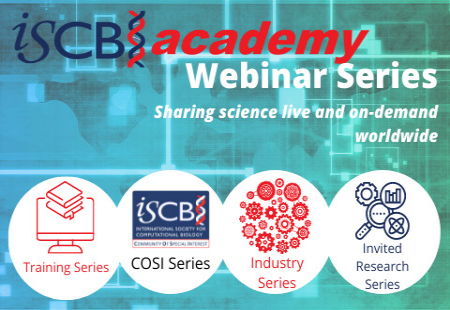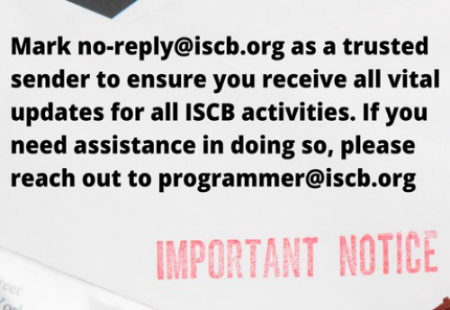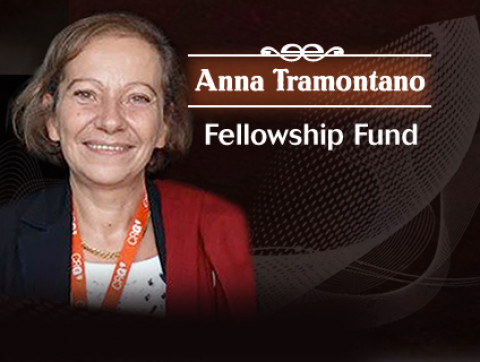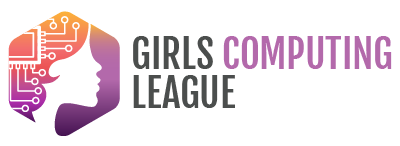RSG Posters Schedule
|
RSG Posters - Click here for poster abstracts
|
| Go directly to: DREAM Posters |
| # |
Author(s) |
Title |
| 1 |
Sombeet Sahu |
Methods for Identifying Tumor Heterogeneity and Rare Subclones in Single Cell DNA Sequence Data |
| 2 |
Sridhar Hariharaputran and Ramanathan Sowdhamini |
PASS2nets: Building Networks of Distantly Related Protein Domains |
| 3 |
German Bernate, Francisco Barajas, Marcia Hiriart and Myrian Velasco |
Gene coexpression network for voltage-dependent potassium channels Kv2 in Beta cells across developmental stages |
| 4 |
Phit Ling Tan, Yosvany Lopez, Kenta Nakai and Ashwini Patil |
TimeXNet Web: Identifying cellular response networks from diverse omics time-course data |
| 5 |
Duygu Ucar |
Chromatin accessibility signatures of immune system aging differ between men and women |
| 6 |
Helen Tung and Uri David Akavia |
Using Protein Localization Studies to Improve Genome-scale Metabolic Models |
| 7 |
Ankeeta Shah and Yang I Li |
Imputing the effects of genetic variation on mRNA splicing in rare human samples |
| 8 |
Anders Wallqvist, Jaques Reifman, Venkat Pannala, Kalyan Vinnakota, Martha Wall, Shanea Estes, Tracy O’brien, Richard Printz, Masakazu Shiota, Jamey Young and Irina Trenary |
Metabolic network-based predictions of toxicant-induced metabolite changes in the laboratory rat |
| 9 |
Soo Jun Park, Soo Young Cho and Young Seek Lee |
Bio Network Visualization and Analysis from Text Mining Data |
| 10 |
Hokeun Sun and Kipoong Kim |
Incorporating genetic networks into case-control association studies with high-dimensional DNA methylation data |
| 11 |
Emily Ackerman and Jason Shoemaker |
Virus-Directed Disruption of PPI Network Control |
| 12 |
Florian Schmidt, Alexander Marx, Jonathan Goeke, Jilles Vreeken and Marcel Schulz |
A supervised method for enhancer identification and linkage to target genes |
| 13 |
Nimrod Rappoport and Ron Shamir |
NEMO: A new algorithm for cancer subtyping by multi-omic clustering |
| 14 |
Rayan Daou, Edgar Wingender and Martin Haubrock |
TFInvestigator: A tool for constructing temporal transcriptional cascades applied to cardiac development |
| 15 |
Anne Heintzelman, Xiangying Mao and Clint Chapple |
Site directed mutagenesis suggests that phosphorylation plays a role in the function of a dominant MED5 mutation in Arabidopsis |
| 16 |
Yuelin Liu and Lenore Cowen |
Improving Gene Prioritization Algorithms Using Diffusion State Distance-Preprocessed Protein Networks |
| 17 |
Jennifer Hammelman and David Gifford |
Variational Autoencoder learns representative chromatin accessibility profiles and makes accurate binding predictions at motif sites |
| 18 |
Jason Lin, Atsushi Takatori, Paul Horton and Hiroki Nagase |
Chem-seq: Evaluation of Genomewide Binding Effects of DNA Minor Groove-Binding Pyrrole Imidazole Polyamides |
| 19 |
Francesca Finotello, Clemens Mayer, Christina Plattner, Gerhard Laschober, Dietmar Rieder, Hubert Hackl, Anne Krogsdam, Zuzana Loncova, Wilfried Posch, Doris Wilflingseder, Sieghart Sopper, Marieke Ijsselsteijn, Douglas Johnson, Yaomin Xu, Yu Wang, Melinda E. Sanders, Monica V. Estrada, Paula Ericsson-Gonzalez, Justin Balko, Noel de Miranda and Zlatko Trajanoski |
quanTIseq: portraying the tumor immune contexture through RNA-seq data deconvolution |
| 20 |
Giulio Ferrero, Francesca Cordero, Sonia Tarallo, Gaetano Gallo, Antonio Francavilla, Giuseppe Clerico, Alberto Realis Luc, Paolo Manghi, Andrew Thomas, Paolo Vineis, Nicola Segata, Barbara Pardini and Alessio Naccarati |
Gut microbiome composition and small RNA spectra in human stool for colorectal cancer detection |
| 21 |
Christian Holland, Bence Szalai, Luz Garcia-Alonso and Julio Saez-Rodriguez |
Unveiling of conserved transcriptomics perturbation signatures in mice and human |
| 22 |
Steffan Paul, Peter Koo and Sean Eddy |
Inferring RNA Secondary Structures from Homologous RNA Sequences with Deep Neural Networks |
| 23 |
Mikel Hernaez and Olivier Gevaert |
Comparison of single and module-based methods for modeling gene regulatory networks |
| 24 |
Joanna Handzlik and Manu Manu |
Predictive Modeling of Signal Processing by Hematopoietic Gene Regulatory Networks |
| 25 |
Han Yuan, Meghana Kshirsagar, Lee Zamparo, Yuheng Lu and Christina Leslie |
BindSpace: decoding transcription factor binding signals by large-scale joint embedding |
| 26 |
Xu Shi, Daifeng Wang and Mark Gerstein |
Single cell deconvolution reveals that the cell fractions vary across brain disorders and human aging |
| 27 |
Yuri Pritykin and Christina Leslie |
A unified genome-wide analysis of dysfunctional T cell states in cancer and chronic viral infection |
| 28 |
Felicia Kuperwaser, Gal Avital, Tara Randis, Adam Ratner and Itai Yanai |
Revealing the Spatiotemporal Dynamics of Placental Group B Streptococcus Infection using scRNA-Seq and Spatial Transcriptomics |
| 29 |
Jing Zhang, Jason Liu, Donghoon Lee, Jo-Jo Feng, Lucas Lochovsky, Shaoke Lou, Michael Rutenberg-Schoenberg and Mark Gerstein |
RADAR: Annotation and prioritization of variants in the post-transcriptional regulome of RNA-binding proteins |
| 30 |
Nhuong Nguyen, Saulius Lukauskas, Peter Faull, Helen Flynn, Bram Snijders, Peter DiMaggio and Till Bartke |
Decoding chromatin regulation through data mining and chromatin proteomics |
| 31 |
Francesca Cordero, Jessica Giordano, Simone Pernice, Roberta Sirovich, Maddalena Arigoni, Jessica Erriquez, Marco Beccuti, Martina Olivero, Maria Flavia Di Renzo and Raffaele Calogero |
CONNECTOR: fitting and clustering analysis of biological growth data |
| 32 |
Peilin Jia, Guangsheng Pei and Zhongming Zhao |
CNet: detecting clinically associated, combina-tory genomic signatures |
| 33 |
Mengting Gu, Anurag Sethi, Emrah Gumusgoz, Joel Rozowsky, Kevin Yip, Richard Sutton and Mark Gerstein |
A framework for supervised enhancer prediction with epigenetic pattern recognition and targeted validation across organisms |
| 34 |
Denise Duma and Yuval Itan |
Deep learning applications to explore and classify high-dimensional feature spaces of millions of genetic variants |
| 35 |
Mehmet Eren Ahsen, Alexandar Grishen, Yoojin Chun, Galina Grishina, Gustavo Stolovitzky, Gaurav Pandey and Supinda Bunyanovich |
Regulatory network analyses to identify transcription factor regulators of disease biomarkers |
| 36 |
German Novakovsky, Wyeth Wasserman, Sara Mostafavi, Artem Cherkasov, Francis Lynn, Paul Pavlidis and Nathaniel Lim |
Small molecules for human embryonic stem cells differentiation |
| 37 |
Rani Powers, Harrison Pielke-Lombardo, Andrew Goodspeed, Aik-Choon Tan and James Costello |
GSEA-InContext: Leveraging biological context to extract and prioritize pathway alterations in transcriptomics experiments |
| 38 |
Robert Vogel, Mehmet Eren Ahsen and Gustavo Stolovitzky |
An Optimal Combination of Computational Systems Biology Predictions: the MOCA algorithm |
| 39 |
Ngoc Tu Le and Hidetoshi Saze |
Learning genetic determinants of plant epigenome by convolutional neural network |
| 40 |
Rasmus Magnusson, Andreas Tjärnberg and Mika Gustafsson |
LIPLIKE: LInear Profile LIKElihood parameter identification for inference of high gene regulatory networks from ‘omics data |
| 41 |
Patrick Martin and Nicolae Radu Zabet |
ChIPanlayser: A Mechanistic Approach to Transcription Factor Binding prediction in Drosophila |
| 42 |
Chayaporn Suphavilai, Ankur Sharma, Lorna Tu, Shumei Chia, Ramanuj Dasgupta and Niranjan Nagarajan |
Predicting cancer drug response in silico for targeting tumor heterogeneity |
| 43 |
Anirban Dutta, Tungadri Bose, Chandrani Das and Sharmila Mande |
Hypoxic adaptation of Mycobacterium tuberculosis: An in silico Investigation of cross-talk between mycobacterial metabolism, gene-regulation and host-pathogen interactions |
| 44 |
Pablo Meyer, Robert Vogel, Gustavo Stolovitzky, Luís Santos, Jerry Chipuk and Marc Birtwistle |
DEPICTIVE : A strategy for the quantitative discovery of sources of cell-to-cell variability |
| 45 |
Nha Nguyen and Kyoung Jae Won |
Calculation of half-life using nascent and mature RNAseq identifies that anti-diabetic rosiglitazone regulates mRNA dynamics to regulate PPARg target |
| 46 |
Michael Peeri and Tamir Tuller |
High resolution analysis of the selection on local mRNA folding strength in protein-coding sequences across the tree of life |
| 47 |
Andrea Rau, Flaminia Zane, Gilles Monneret, Pascal Fieth, Alexander Hartmann, Florence Jaffrézic and Gregory Nuel |
Laplace approximation for inferring causal directed acyclic structures in gene regulatory networks |
| 48 |
Amel Bekkar, Julien Dorier, Isaac Crespo, Cristina Casal, Anne Estreicher, Anne Niknejad, Alan Bridge and Ioannis Xenarios |
Predicting therapeutic targets for cardiovascular disease using logical modeling |
| 49 |
Randie Kim, Sofia Nomikou, Zarmeena Dawood, Nicolas Coudray, George Jour, Una Moran, Jeffrey S. Weber, Narges Razavian, Richard Shapiro, Russell Berman, Iman Osman and Aristotelis Tsirigos |
Using Deep Learning on Histopathology Images to Predict the Presence of BRAF Driver Mutation |
| 50 |
Tejaswi Badam, Mika Gustafsson and Zelmina Lubovac |
Genomic Concordance in Omic Disease Modules: key factor for understanding Complex diseases |
| 51 |
Jukka Intosalmi, Henrik Mannerstrom, Saara Hiltunen and Harri Lähdesmäki |
Hierarchical regression model to detect dependencies in single cell RNA-seq and multi-omics read count data |
| 52 |
Gal Avital, Felicia Kuperwaser and Itai Yanai |
Revealing the hallmarks of host-pathogen interactions across distinct bacterial infections using scDual-Seq |
| 53 |
Dongwon Lee, Ashish Kapoor, Changhee Lee, Michael Mudgett, Michael Beer and Aravinda Chakravarti |
Predicting and correcting the sequence effects of DNA tags on massively parallel reporter assays |
| 54 |
Mackenzie Hastings, Konstantinos Theofilatos and Seferina Mavroudi |
Combining Network Theory and Machine Learning to Identify a Diagnostic and Prognostic Biosignature for Glioblastoma |
| 55 |
Norma Alejandra Vergara Lope Gracia |
Fine-scale linkage disequilibrium structure of non-coding RNAs, genic and sub-genic sequences |
| 56 |
Kihyun Lee, Hyunwoo Cho, Robert Rickert, Qing Li, Julian Pulecio, Christina Leslie and Danwei Huangfu |
FOXA2 is required for enhancer priming during pancreatic differentiation |
| 57 |
Yang Chen, Yuping Zhang and Zhengqing Ouyang |
Fast and accurate reconstruction of cell trajectory and pseudo-time for massive single cell RNA-seq data |
| 58 |
Chloe Steen, Chih Long Liu, Andrew Gentles, Aadel Chaudhuri, Florian Scherer, Michael Khodadoust, Mohammad Esfahani, Bogdan Luca, David Steiner, Maximilian Diehn, Ash Alizadeh and Aaron Newman |
High-throughput tissue dissection and cell purification with digital cytometry |
| 59 |
Feng Bao, Yandong Zhang, Long Cai and Guo-Cheng Yuan |
DNA seqFISH resolves E. coli chromosome structure during cell replication. |
| 60 |
Giacomo Baruzzo, Giovanni Finco, Francesco Morandini, Piergiorgio Alotto and Barbara Di Camillo |
MAST: A MULTI-AGENT BASED SPATIO-TEMPORAL MODEL OF THE INTERACTION BETWEEN IMMUNE SYSTEM AND TUMOR GROWTH |
| 61 |
Thu Chu, Rui Qin, Jonathan Chung, Deepika Dhawan and Lara Mahal |
High Throughput Cell Microarray for Mapping miRNA:Protein Interactomes |
| 62 |
Yuping Zhang, M. Henry Linder, Ali Shojaie, Zhengqing Ouyang, Ronglai Shen, Keith Baggerly, Veerabhadran Baladandayuthapani and Hongyu Zhao |
Dissecting Pathway Disturbances Using Network Topology and Multi-platform Genomics Data |
| 63 |
Maziyar Baranpouyan, Abha Bais and Dennis Kostka |
BGCLUST: Clustering large single-cell RNA-seq datasets |
| 64 |
Yann Ilboudo, Melanie Garrett, Allison Ashley-Koch, Marilyn Telen and Guillaume Lettre |
Metabolite signatures of organ dysfunction in sickle cell disease patients |
| 65 |
Giacomo Baruzzo, Ilaria Patuzzi and Barbara Di Camillo |
SPARSim Single Cell: a count data simulator for single cell RNA-seq data |
| 66 |
Xiao Li, Jose Munoz and Christina Cuomo |
Title: FunPipe: a python library for efficient construction of fungal genomic pipelines |
| 67 |
Qi Song and Song Li |
Accurate prediction of regulatory maps in Arabidopsis by integrating DAP-seq, ATAC-seq and single cell sequencing data |
| 68 |
Daria Kogut and Jaroslaw Smieja |
Modeling of signaling pathway regulation and their response with presence stresogenic factors. |
| 69 |
Nam Nguyen, Ian Blaby and Daifeng Wang |
ManiNetCluster: A manifold learning approach to reveal the functional linkages across multiple gene networks |
| 70 |
Anastasia Shcherban, Juha Kesseli and Matti Nykter |
Analysis of tissue specific regulatory programs with chromatin accessibility data and binding motif models |
| 71 |
Zhicheng Ji, Weiqiang Zhou and Hongkai Ji |
Single-cell ATAC-seq Signal Extraction and Enhancement with SCATE |
| 72 |
Yue Wu, Ali Pazokitoroudi and Sriram Sankararaman |
Scalable estimation of heritability and genetic correlation for biobank-scale data |
| 73 |
Lee Zamparo, Han Yuan, Meghana Kshirsagar and Christina Leslie |
Better decoding of TF signals in accessible chromatin with learned embeddings and neural networks |
| 74 |
Matthew Madgwick, Padhmanand Sudhakar and Tamas Korcsmaros |
Identification of prognostic indicators of healthy ageing with a machine learning based systems biology approach using gut microbiome data |
| 75 |
David Detomaso, Matthew Jones, Tal Ashuach, Meena Subramaniam, Chun J Ye and Nir Yosef |
Functional Interpretation of Single-Cell Similarity Maps |
| 76 |
Sujeethraj Koppolu and Bin Zhang |
A High-Performance Multi-Classifier System Using Hybrid-Overlay Features to Predict miRNA:Protein Interactions |
| 77 |
Meghana Kshirsagar, Han Yuan, Lee Zamparo and Christina Leslie |
Topic-models for learning epigenetic profiles jointly from SELEX and ATAC-seq |
| 78 |
Irina Medvedeva, Matthew Stokes, Peter Schafer and Robert Yang |
Cross-trial meta- and time-series pharmacodynamic analyses of Apremilast effect |
| 79 |
Naomi Yamada, Nina Farrell, B. Franklin Pugh and Shaun Mahony |
Analysis of ChIP-exo read profiles reveals spatial organizations of protein complexes |
| 80 |
Angelina Volkova and Kelly Ruggles |
Predictive Metagenomic Analysis of Autoimmune Disease |
| 81 |
Sukanya Panja, Sheida Hayati, Nusrat Epsi, James Scott Parrott and Antonina Mitrofanova |
Predictive analysis of response to androgen-deprivation in prostate cancer |
| 82 |
Jonathan Scheiman, Jacob Luber, Theodore Chavkin, Tara MacDonald, Angela Tung, Loc-Duyen Pham, Marsha Wibowo, Renee Wurth, Sukanya Punthambaker, Braden Tierney, Zhen Yang, Mohammad Hattab, Sarah Lessard, George Church and Aleksandar Kostic |
Discovery and Validation of a Gut Microbiome that Improves Athletic Performance |
| 83 |
Cigdem Sevim Bayrak and Yuval Itan |
Predicting Gain-of-Function and Loss-of-Function Mutations |
| 84 |
Kamil Slowikowski, Hung N Nguyen, Gerald F M Watts, Fumitaka Mizoguchi, Erika H Noss, Michael B Brenner and Soumya Raychaudhuri |
Finding transcriptional regulators central to rheumatoid arthritis with transcriptomics of IL-17 dose response, time series, and siRNA silencing in stromal cells |
| 85 |
Marissa Sumathipala, Marc Santolini and Amitabh Sharma |
miRNA-based Disease Subtyping by integrating miRNAome and Interactome |
| 86 |
Divyanshi Srivastava, Milica Bulajić, Shaun Mahony and Esteban Mazzoni |
Co-factor driven landscapes define Hox TF binding in motor neuron subtype specification |
| 87 |
Naoki Osato |
Discovery of biased orientation of DNA motif sequences affecting enhancer-promoter interactions and transcription of genes |
| 88 |
Da-Inn Lee and Sushmita Roy |
Discovering structural units of chromosomal organization with graph-regularized non-negative matrix factorization |
| 89 |
Kabir Manghnani, Adam Drake and Nathan Wan |
GENE-ML: GENomic Embedding via Metric-Learning |
| 90 |
Byungwook Lee, Gunhwan Ko and Pan-Gyu Kim |
Bio-Express: Bioinformatics workflow system for massive genomic sequencing data analysis |
| 92 |
Reuben Moncada, Florian Wagner, Marta Chiodin, Joseph Devlin, Maayan Baron, Cristina Hajdu, Diane Simeone and Itai Yanai |
Building a tumor atlas: integrating single-cell RNA-Seq with spatial transcriptomics in pancreatic ductal adenocarcinoma |
| 93 |
Alexander Sasse and Quaid Morris |
Inferring RNA binding specificities from protein sequences by joint matrix factorization |
| 94 |
Yiming Wu, Aayushee Jain and Yuval Itan |
Identifying disease-causing mutations, genes and pathways in exomes of Ashkenazi Jewish inflammatory bowel disease patients |
| 95 |
Darya Stepanenko and Ye Zhang |
Alternative mechanical way to track the path of cancer cells |
| 96 |
Evgeni Nikolaev and Eduardo Sontag |
Immunobiochemical Reconstruction of Influenza Lung Infection - Melanoma Skin Cancer Interactions |
| 97 |
Almudena Espin-Perez, Bogdan Luca, Aaron Newman and Andrew Gentles |
Pan-cancer analysis of distant metastasis in the context of node-positive and node- negative disease |
| 98 |
Aaron Solomon and Daphne Ezer |
TissueTimer: temporal and tissue-ratio estimation from bulk RNA-sequencing samples |
| 99 |
Xiangying Mao, Vikki Weake and Clint Chapple |
Mutation of Mediator subunit CDK8 counteracts the stunted growth in an Arabidopsis MED5 mutant |
| 100 |
Yungang Xu, Weiling Zhao, Scott D. Olson, Karthik S. Prabhakara and Xiaobo Zhou |
Alternative splicing links histone modifications to stem cell fate decision |
| 101 |
Elise Flynn, Stephane Castel, Pejman Mohammadi and Tuuli Lappalainen |
Tissue-variability of regulatory variant effects and the role of transcription factors |
| 102 |
Robin Browaeys, Wouter Saelens and Yvan Saeys |
NicheNet: Modeling intercellular communication by linking ligands to target genes |
| 103 |
Juliana Machado, Ramiro Magno, Joana M. Xavier and Ana-Teresa Maia |
Uncovering alternative splicing cis-regulation in breast cancer risk |
| 104 |
Sivan Gershanov, Igor Vainer, Albert Pinhasov, Helen Toledano, Nitza Goldenberg-Cohen and Mali Salmon-Divon |
Using machine learning algorithms for classification of medulloblastoma subgroups based on gene expression data |
| 105 |
Sne Morag and Mali Salmon-Divon |
Characterization of different cell types using Benford law |
| 107 |
Wenpin Hou, Zhicheng Ji, Dongwon Lee, Suchi Saria and Aravinda Chakravarti |
Causal Gene Regulatory Network Construction using Single-cell RNA-seq and Single-cell ATAC-seq data |
| 108 |
Husam Abdulnabi and Tim Westwood |
Exploring the Roles of Drosophila Heat Shock Factor in Stress and Development |
| 109 |
Jimena Monzón-Sandoval, Elena Burlacu, Zameel Cader, Sally Cowley and Caleb Webber |
Cell type specific response: LPS time course in co-cultured iPSC derived neurons and microglia |
| 110 |
George Rosenberger, Moritz Heusel, Ruedi Aebersold and Andrea Califano |
SECAT: High throughput quantitative protein complex profiling |
| 111 |
Leandro Balzano Nogueira, Ricardo Ramirez, Tatyana Zamkovaya, Jordan Daley, Alexandria Ardissone, Srikar Chamala, Desmond Schatz, Mark Atkinson, Michael Haller, Patrick Concannon, Eric Triplett and Ana Conesa |
Multiblock integration of transcriptomics and metabolomics to study Type 1 Diabetes progression |
| 112 |
Alyssa Morrow, Dharmeshkumar Patel, James Kaminski, John W. Hughes, Nick Haining, Bruce R. Blazar and Nir Yosef |
Epigenetic footprinting in T cells and fibroblasts from reprogrammed inducible pluripotent stem cells |
| 113 |
Gabriela Pregernig, Matthew Nguyen, Kathy So, Joseph Burns and Adam Palermo |
Inference of spatial cell type patterns in the adult mouse cochlea through single cell RNA-Seq doublet deconvolution |
| 114 |
Guray Kuzu, Matthew J. Rossi, Naomi Yamada, Chitvan Mittal, William K.M. Lai, Nitika Badjatia, Gretta Kellogg, B. Franklin Pugh and Shaun Mahony |
Topic modeling enables identification of regulatory complexes in a comprehensive epigenome |
| 115 |
Joseph R Boyd, Joshua T Rose, Jonathan Ar Gordon, Seth Frietze, Sayyed K Zaidi, Janet L Stein, Jane B Lian and Gary S Stein |
Per peak strand cross- correlation as a peak call refinement metric. |
| 116 |
Peter Banda, Venkata Pardhasaradhi Satagopam and Reinhard Schneider |
Ada: The Clinical and Translational Data Integration and Analysis Platform with Scalable Machine Learning |
| 117 |
Tejaswi Badam, Mika Gustafsson and Zelmina Lubovac |
Omic Network Modules as tools for Personalized cancer chemotherapy in Non-Small Cell Lung Cancer |
| 118 |
Sofia Esteban Serna |
Genetic Diagnosis of Heterogeneous Conditions Applying Targeted Gene Capture and Next-generation Sequencing |
| 119 |
Syed F Ahmad, Diogo C Cabral-de-Mello, Patrícia Parise-Maltempi, Vladimir P Margarido, Rachel O’Neill, Guilherme T Valente, Cesar Martins |
The integrative genomics and bioinformatics analysis unveil the genetic contents and evolutionary origin of B chromosomes. |
| 120 |
Damian Wojtowicz , Dong-Yeon Cho , Hangnoh Lee , Steven Russell, Brian Oliver and Teresa M. Przytycka |
Interplay between copy number, dosage compensation and expression noise in Drosophila asite |
| - top - |
DREAM Posters Schedule
|
DREAM Posters - Click here for poster abstracts
|
| Go directly to: RSG Posters |
| # |
Author(s) |
Title |
| 2 |
Imane Nedjar, Saïd Mahmoudi and Mohammed Amine Chikh |
Topological methods for mammographic images classification: The Digital Mammography DREAM Challenge 2017 |
| 3 |
Shibiao Wan, Junil Kim and Kyoung Jae Won |
Hyper-fast and accurate processing of large-scale single-cell transcriptomics data via ensemble random projection |
| 4 |
Sage Davis, Geoffrey Siwo, Pablo Meyer, Katrina Button-Simons, Lisa Checkley-Needham, François H Nosten, Timothy J.C. Anderson, Gustavo Stolovitzky and Michael T Ferdig |
DREAM of Malaria: Predicting Drug Resistance in an Apicomplexan Parasite |
|
5
|
Gaurav Bhatti, Roberto Romero and Adi L. Tarca |
Combining single-cell expression matching to insitu data and proximity analysis: an approach to the DREAM Single Cell Transcriptomics Challenge |
| 6 |
Hasiba Asma |
U-Be Dreamin |
|
7
|
Jiajie Peng, Xiaoyu Wang and Xuequn Shang |
Combining Gene Ontology and Protein-Protein Interaction Information to Reconstruct the location of Single Cells in the Drosophila Embryo |
|
8
|
Nestoras Karathanasis, Phillipe Loher and Isidore Rigoutsos |
SCTC Challenge DeepCMC Submission |
|
9
|
Minji Jeon, Donghyeon Park, Jinhyuk Lee, Hwisang Jeon, Miyong Ko, Jaewoo Kang and Aik-Choon Tan |
ReSimNet: Drug Response Similarity Prediction based on a Siamese Neural Network |
|
10
|
Jianhua Ruan and Maryam Zand |
Spatial mapping of single cells in the Drosophila embryo using single-cell transcriptomic data |




























